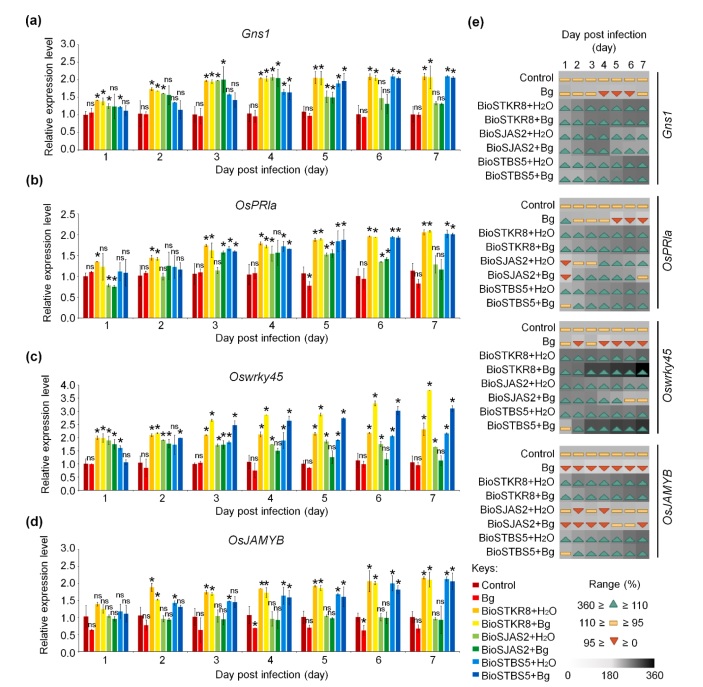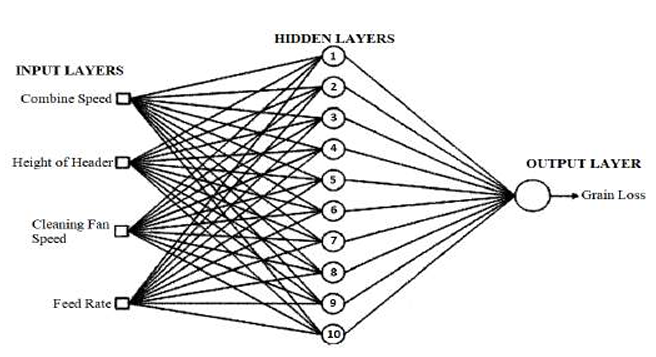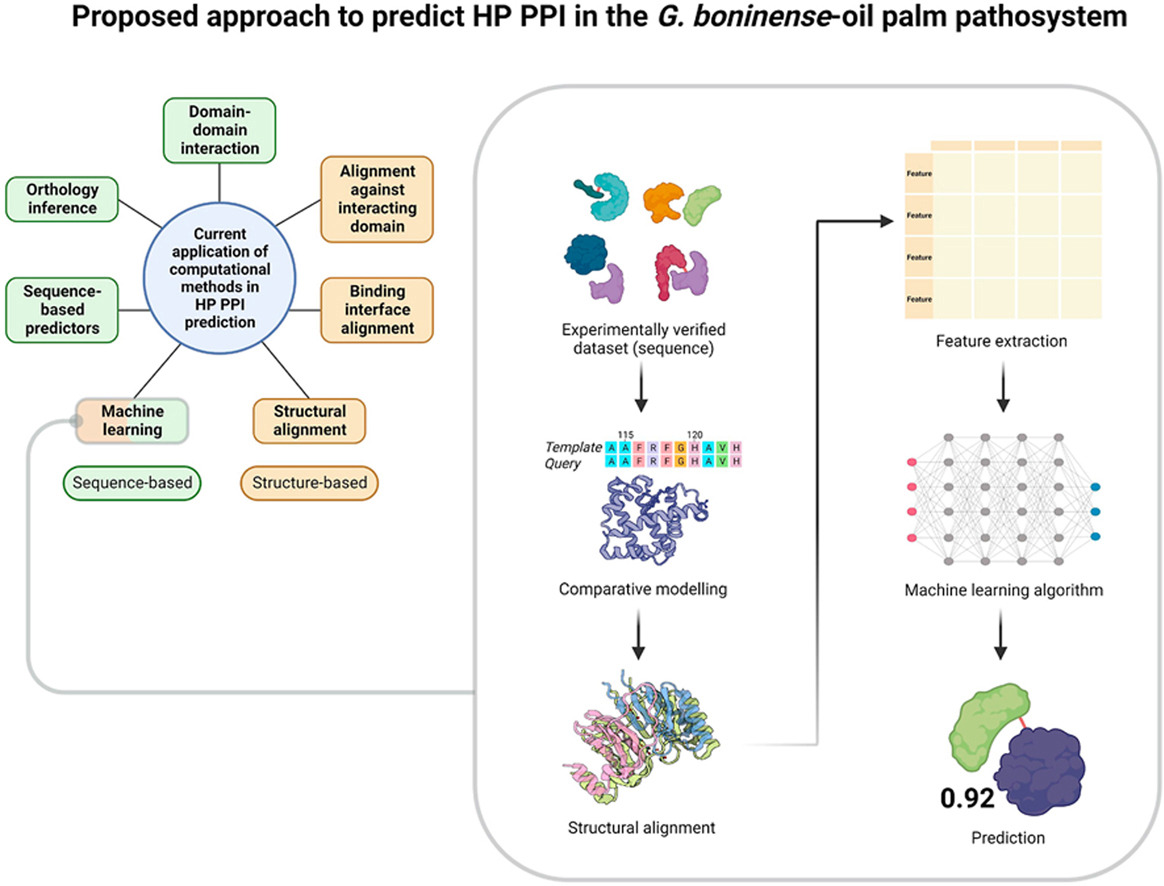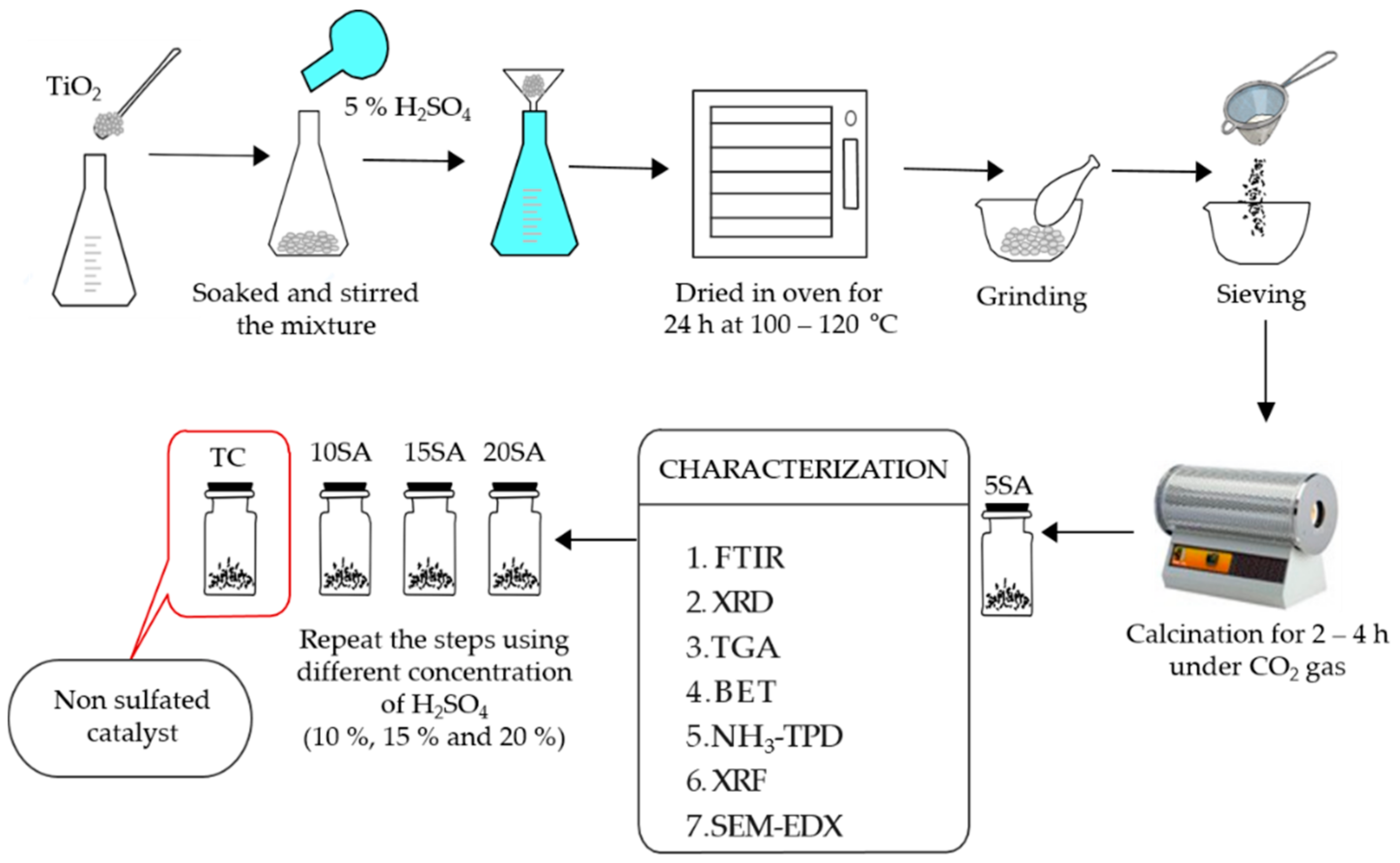The ability of plant growth-promoting Streptomyces (PGPS) against bacterial panicle blight (BPB) disease caused by Burkholderia glumae has been previously examined under laboratory and greenhouse conditions. To further harness their potential, the development of bioformulations containing PGPS is needed. This study investigates the efficacy of Streptomyces bioformulations in suppressing the growth of B. glumae under greenhouse conditions. The powder-based bioformulations of Streptomyces were prepared and characterized based on potential phytotoxic effect and shelf life stability. The efficacy of Streptomyces bioformulations in suppressing BPB disease was assessed according to the expression of Gns1 (β-1,3-glucanase), OsPR1a (pathogenesis-related class 1), Oswrky45 (SA-responsive) and OsJAMYB (JA-responsive) using RT-qPCR. The talc-kaolin-Streptomyces bioformulations (BioSTKR8, BioSJAS2 and BioSTBS5 containing Streptomyces corchorusii TKR8, Streptomyces corchorusii JAS2 and Streptomyces misionensis TBS5, respectively) showed no phytotoxic effect on rice plants. Bioformulations were more stable when stored under refrigeration than at room temperature, with more than 50 % spore viability at 180 days after storage. Treatment with BioSTKR8 (7 %) and BioSTBS5 (10 %) was able to reduce BPB disease severity while increasing rice yield by up to 301 % (BioSTKR8) and 170 % (BioSTBS5) relative to control (100 %). Transcript levels of Gns1, OsPR1a, Oswrky45 and OsJAMYB were up-regulated by the treatment of BioSTKR8 and BioSTBS5 at 7 DPI compared to the control. Results suggest that BioSTKR8 and BioSTBS5 are very promising bioformulations to be utilized as potential plant growth promoters and biological control agents (BCA) for sustainable rice production and BPB disease management.

Relative transcript levels of target genes based on RT-qPCR analysis. The expression of target genes, namely (a) β-1,3-glucanase (Gns1), (b) pathogenesis-related class 1 (OsPR1a), (c) SA-responsive (Oswrky45), (d) JA-responsive (OsJAMYB) normalized with ubiquitin (OsUBQ5) as the reference gene and (e) Heatmap of the transcript levels of target genes between each treatment relative to the control.
Heatmap of the transcript levels of target genes between each treatment relative to the control.
-Bg : Burkholderia glumae
-BioSTKR8, BioSJAS2, BioSTBS5 : Streptomyces bioformulation
-H2O: Water
Mohamad Syazwan Ngalimat, Erneeza Mohd Hata, Dzarifah Zulperi, Siti Izera Ismail, Mohd Razi Ismail, Nur Ain Izzati Mohd Zainudin, Noor Baity Saidi, Mohd Termizi Yusof. (2023). Biological Control. 184(2023)105286.
Artikel penuh: https://doi.org/10.1016/j.biocontrol.2023.105286
Tarikh Input: 31/07/2023 | Kemaskini: 10/08/2023 | ainzubaidah
PERKONGSIAN MEDIA



























